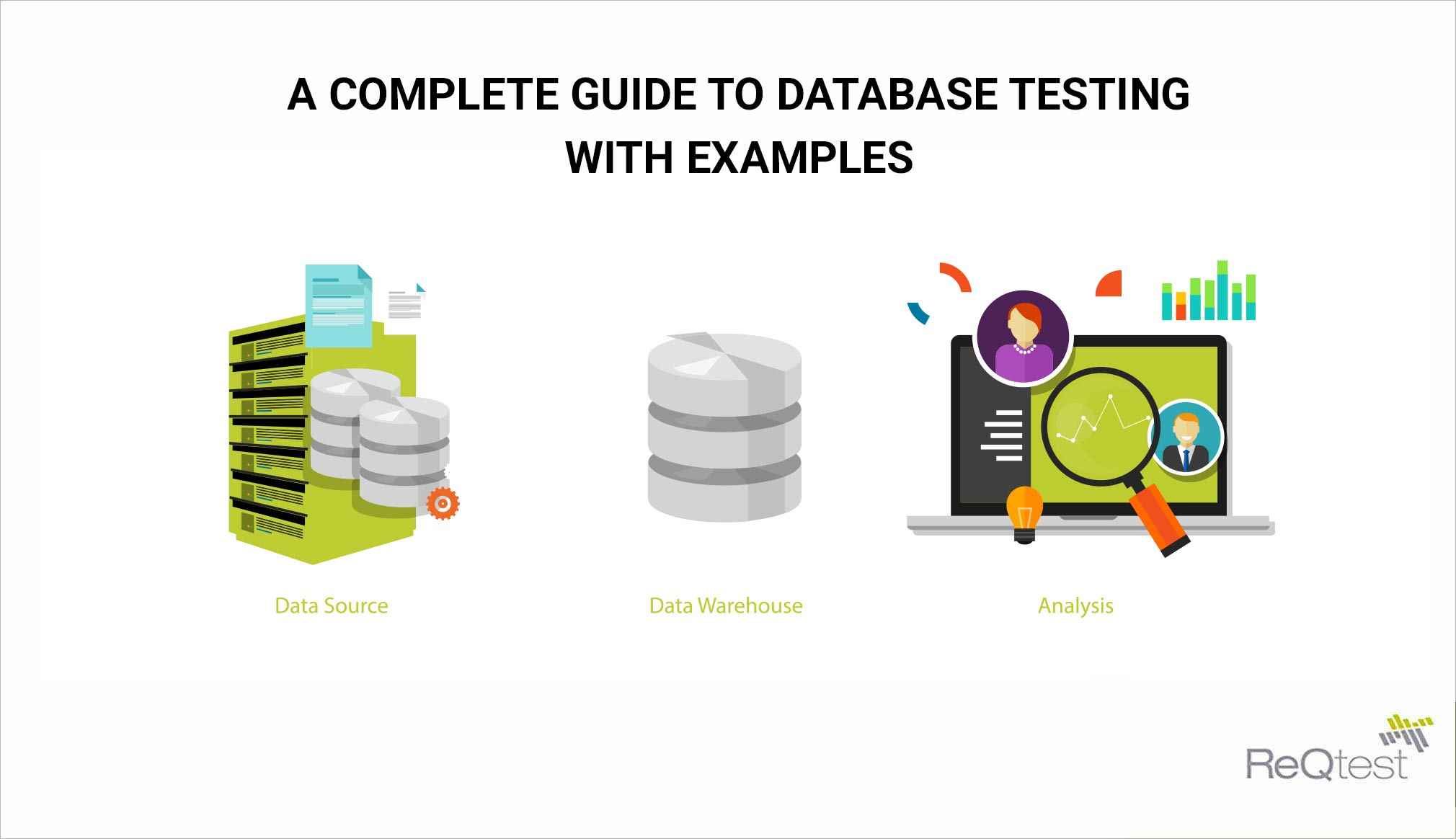July 27, 2020
A Complete Guide To Database Testing With Examples
This article covers database testing. The database is an essential part of any software, and so its consistency and integrity need to be monitored and created in line with the application. In any software development process, database testing is a vital step that you cannot overlook.
Let’s explore this procedure a little bit further to understand its importance, value, and role.
What Is Database Testing?
The database can be considered the heart of any software application, so making sure that it is functioning correctly is essential. Database testing is the process of checking that everything is in order with regards to the database. This is done under a controlled testing environment. The process is also known as back-end testing or data testing.
Database testing involves checking things such as the schema, tables, or triggers. The process also checks data integrity and consistency. To do this, complex queries are created to load or stress test the database. Doing this helps to test the responsiveness of the system, and how well it can stand up to different scenarios.
Database testing is a layered process, as the testing usually covers several different areas. When doing a complete database test, you need to test the user interface layer, the business layer, the data access layer, and the database itself.
Each of these layers works together to provide a complete and fully responsive application. Making sure that they all work effectively is crucial when developing any kind of software.
Why Is Database Testing Important?
Without a fully-functioning database, an application cannot be put to proper use. The database is where all information is stored, and it acts as a critical back-end point of any software. Applications rely on a fully-functioning database to store and create information, as well as respond to queries.
The key focus of database testing is to make sure that the values and information stored in the database are accurate.
When undertaking a database test, the tester needs to have a complete understanding of the application. They must then list all possible queries relevant to the software. The development team can also contribute to this. The database test will then help to see if each query works as it should with regards to its specifications.
Without proper database testing, an application may have hidden faults. When using the software, this could mean that data is lost, not created, or incorrectly stored. This could have a major effect on the overall experience and effectiveness of the application.
Database testing also helps to ease the complexity of calls to the backend. It also works to make sure that no harmful or incorrect data is being stored at the backend of the application.
What should be tested?
As this is a form of backend testing, database testing involves aspects of the software which are not visible to the user. This includes the flow of information through the app to the database. This includes data mapping and data integrity.
The ACID properties validation is also included. These are atomicity, consistency, isolation, and durability. Accurate testing of these happens during the DB testing activity. Database testing also needs to cover the accuracy of implemented business rules, as databases are not just for records storage.
All of these different areas of the database and information storage and queries need to be properly tested.
How To Perform Database Testing?
There are many different techniques and tools used for database testing. These differ depending on the application, the queries involved, and the preferences of the software developers. The basic aim of testing always remains the same though.
Transactions testing is one technique. This process helps to ensure that each of the ACID properties works accurately.
Then there is schema testing. Schema testing makes sure that each object in the scheme works as it should. This is done by doing a thorough check of each object. The objects tested here include:
- Databases and devices
- Database names
- Database settings
- Device registration, data and reset
- Tables
- The space for each database
- Checking the keys and indexes
Stress testing and performance testing are also carried out to make sure that basic database functions and procedures work properly. For stress and performance testing, the tester creates certain queries and runs them through the system to see how the software responds.
No matter what procedure and testing methods are used, the tester will have to have a strong grasp of both SQL (Structured Query Language) and DML (Data Manipulation Language).’
Examples Of Database Testing
There are various tools that testers can use for this process – each one varying in different elements. However, the basic function remains the same. The process will involve these necessary steps:
1) Preparing the environment
2) Run the test
3) Check the test result
4) Validate this
5) Report the findings
For example, when preparing the environment, the tester and software developers will come up with all possible queries that can run through the application. The test will then involve running through these queries, and checking the data integrity. This means that the resulting data will need to be truthful, accurate, complete, retrievable, and verifiable.
The test could also include monitoring data mapping, the different ACID properties, and ensuring the accuracy of the implemented business rules.
Conclusion
Database testing can take different forms through the various tools on offer. However, the overall results all need to remain the same. With so many different features, factors, and processes that go into a database, testers need to understand the key concepts to this process. You should always be sure to test the database properly when developing any form of software.
Share article

